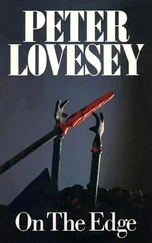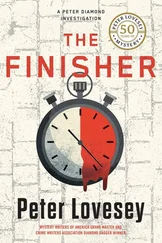‘A sinecure.’
‘Yes, Thomas Chaucer must have taken the job seriously, so why shouldn’t his father have lived in Petherton Park before him? Nothing says he did, but nothing says he didn’t. And if there was a house, it wouldn’t be remarkable if somewhere in the structure they commemorated The Canterbury Tales with a piece of sculpture. Does Park House still exist?’
‘You’re an optimist,’ Poke said. ‘Just as poor Gildersleeve was.’
Notes from a website called British History Online revealed that Park House had been in place as early as 1336 and may have been renamed The Lodge about 1400. Most of it was dismantled during Queen Elizabeth’s reign.
‘Pieces may have been preserved,’ Halliwell said, ‘particularly anything associated with Chaucer himself.’
‘All of this is tenuous, to say the least,’ Poke said.
Diamond nodded. ‘But at the end of the day, I have a chunk of masonry in my office that no one disputes is the Wife of Bath . And she must have come from somewhere.’
With the computer and other items from Professor Gildersleeve’s office stacked into the boot of Halliwell’s car, the two detectives drove home. They agreed on one thing: Dr. Poke was a jealous man as well as a pompous twit.
‘He thought he should have been the professor,’ Halliwell said.
‘With Gildersleeve dead, he may get his wish,’ Diamond said. ‘But in case you’re about to say it gives him a motive for murder, let’s keep a grip on what really happened. The professor was shot because he tried to take on the hold-up men. Everyone who was there agrees on that. The mystery is why he was so possessive about the Wife of Bath .’
‘And who hired the robbers.’
‘Exactly. I can’t picture Dr. Poke staging a hold-up himself, even if he thought it would upset his rival to this extent.’
‘He’d be obvious, with a voice like his, and that hair.’
‘They were wearing balaclavas, remember.’
‘Well, he isn’t the gun-toting type,’ Halliwell said.
‘Agreed. But I didn’t ask him where he was on the day of the auction. Slipped up, there.’
‘I wouldn’t lose any sleep over that, guv.’
‘One thing he said gave me a bit of a turn. About the curse of the Wife of Bath . I’m sharing an office with her.’
‘He was on about Tutankhamun’s curse, the old story about people dying during the excavations, supposedly because they disturbed the tomb. Load of balls dreamed up to sell newspapers.’
They checked in at the incident room at the end of the afternoon and found an email printout from the CSI team. Diamond read it, frowning, and jerked back in disbelief.
‘Something the matter?’ Halliwell asked.
He handed the paper across. ‘The bullet that killed the professor was more than fifty years old. It was a thirty-eight calibre designed to be used with a Webley Mark IV revolver.’
Halliwell looked it through. ‘That’s a name from the past. Webley. The army were using them as standard sidearms in the war.’
‘Both wars.’
‘Long time ago. It says here the Mark IV remained in service until 1963.’
‘When sexual intercourse began.’
From Halliwell’s dropjaw reaction, it was obvious he missed the reference.
In a lofty tone, Diamond said, ‘The Larkin poem. Do I have to quote the lines? And you thought I was just a Chaucer expert.’
Halliwell was lost for words.
‘Don’t look like that. Let’s stay with guns. You’re going to ask me how they can tell it was fired from a Webley and not some other weapon.’
Now Halliwell grinned. ‘No I’m not. It’s the striations.’
Diamond was impressed. He knew the basics, but he had never bothered much with the terminology.
‘The grooves on the side of the bullet,’ Halliwell went on. ‘All the makes have their own pattern so that when the bullet passes through the barrel it gets marked. You’ll find six grooves when it was fired from a Colt and seven with a Webley. A Colt has a left-hand twist and a Webley a right. Now, a BrowningБ’
‘Enough said,’ Diamond interrupted the lecture. ‘It was a Webley. If ballistics are convinced, so am I. My point was that this is an out-of-date weapon.’
Halliwell nodded. ‘But it doesn’t have to be the latest model. If it works, it can kill. Obviously this one did. In a way it’s fitting that an obsolete firearm was used at an antiques auction. At least it wasn’t a duelling pistol.’
‘Does it tell us anything about the hitmen?’
‘Only that they didn’t have state-of-the-art guns.’
‘Cut-price hitmen.’
‘They messed up badly, that’s true.’
‘The email goes on about making a check of the records. It’s not going to be a licensed gun, is it?’
‘Definitely not,’ Halliwell said. ‘But there are still plenty of old Webleys knocking around. Thousands of servicemen never handed them in. I expect what they mean is that they’re comparing the, um’ — pause for a smile — ‘striations with ammunition recovered from other firearms incidents. We may discover the gun was fired in some other raid.’
‘We could use some help like that. But let’s not get our hopes up. It may have been sitting in someone’s sock drawer since 1963.’
One of the items they had brought back in Halliwell’s car was John Gildersleeve’s book, Chaucer: The Bawdy Tales . Diamond took it home to read. A spot of bawdiness would go down well, and he might get a clue as to why the Wife of Bath was worth at least twenty-four grand to the professor. His chance to impress the academic world? Or was the man obsessed, in thrall to one of Chaucer’s best known creations? As a policeman who had seen a lot in his time, Diamond couldn’t accept that the weather-beaten piece of stone had anything remarkable about it. He wasn’t impressed. The experience of being evicted from his own office had left him only with negative thoughts, a suspicion that this thing was trouble. If nothing else, the book ought to act as a corrective.
In his small house in Weston, with Raffles perched on the arm of the chair — and purring — he turned to the chapter entitled ‘As Help Me God, I Was a Lusty Oon: The Much-Married Wife of Bath.’ It was not the hot stuff he expected. It opened with a statement that this would be a ‘deconstructive study of certain assumptions, avoiding the twin snares of reductivity and indeterminacy.’ Even Raffles turned his head away in disappointment. Two pages in, Raffles was yawning. Diamond dropped the book on the floor and reached for the modern English version of The Canterbury Tales Paloma had given him.
Generations of schoolchildren had reason to be grateful to Nevill Coghill and now so was Peter Diamond. Here was the Wife in language he could understand and enjoy, with some mild bawdiness thrown in regarding her ‘chamber of Venus,’ the pleasures of love-making and the demands she made in bed. Fair enough, he thought, this isn’t roll-in-the-aisles stuff, but it does the job with style and zip, written in rhyming verse that apparently uses the same metre as the original.
The General Prologue gave him some background. Alison was a bold-faced, healthy-looking character who queened it over all the other women in her parish, insisting on being first to make the offering in church and furious if anyone challenged her right.
This he found easy to believe.
She spun her own clothes and dressed on Sundays in a flowing cloak, red, tight-gartered stockings and tightly laced shoes, and a hat as large as a shield and weighing as much as ten pounds. He could understand Paloma’s delight in dressing an actress like that. Upon her amblere — which he discovered was an ambling horse — the wife was a much-travelled pilgrim. Impressively for a fourteenth century woman, she’d been to Jerusalem three times and other religious sites in France and Italy. She was chatty and quick to laugh, displaying a gap in her teeth which was said to be a sure sign of a lustful nature.
Читать дальше










![Питер Ловси - Do Not Exceed the Stated Dose [Stories]](/books/437200/piter-lovsi-do-not-exceed-the-stated-dose-stories-thumb.webp)

